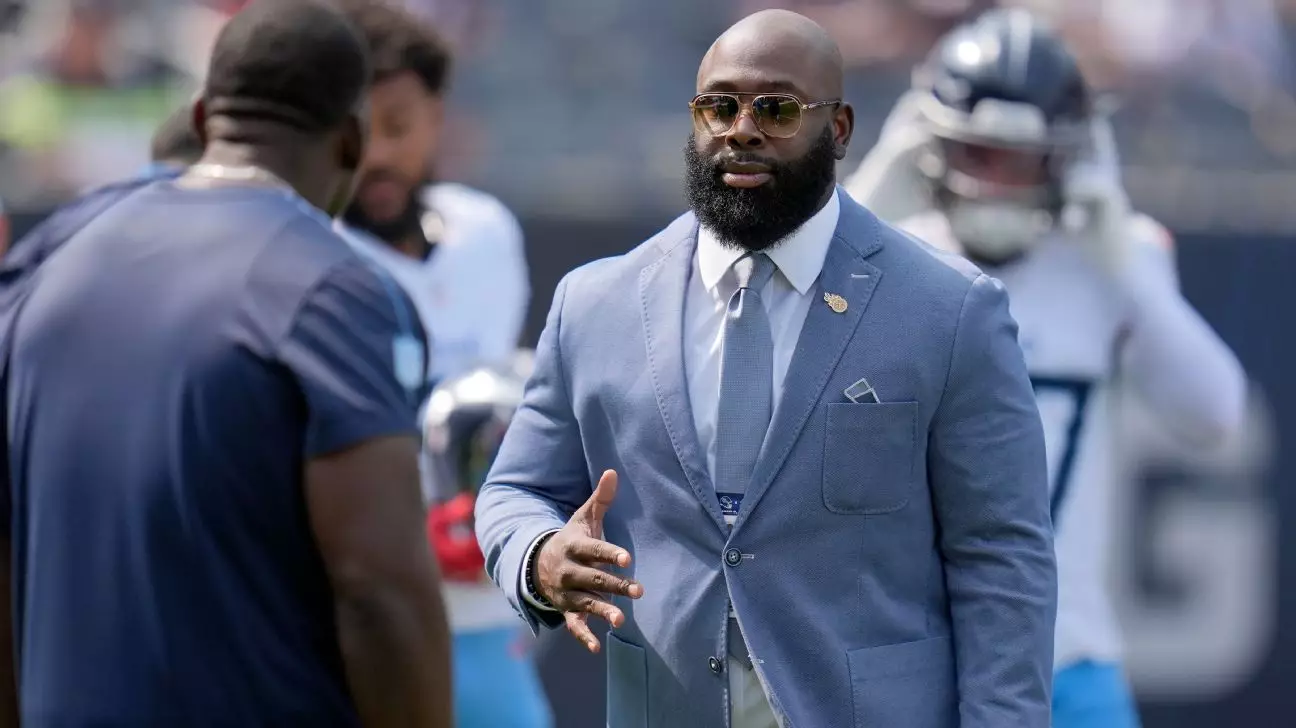The Tennessee Titans‘ recent decision to part ways with general manager Ran Carthon exemplifies the difficulties franchises face in achieving sustained success in the competitive landscape of the NFL. This move comes on the heels of a dismal 3-14 season, the franchise’s worst record in terms of losses since 2015. Not only did this lead to the Titans earning the No. 1 pick in the upcoming 2025 draft, but it also raises critical questions about management strategies, team dynamics, and the complexities of rebuilding a football organization.
Controlling owner Amy Adams Strunk did not mince words in her statement, expressing her disappointment with the team’s performance over the last two years. „It’s impossible to ignore that our football team hasn’t improved,“ she lamented. This statement reflects a broader truth in professional sports: that organizations, especially those with storied histories like the Titans, face immense pressure not only to win but to improve consistently. The challenge lies not just in talent acquisition but also in establishing a coherent vision shared by all layers of management, from the front office to the coaching staff.
Carthon was given the dual role of executive vice president and general manager, a position that clearly did not yield the desired results. The Titans have struggled, managing an abysmal 9-25 record during his tenure—which prompts a critical analysis of the effectiveness of management structures. This issue stretches beyond one individual’s performance; it calls attention to the organizational philosophy that guides the day-to-day operations.
With the dismissal of Carthon, the Titans are now looking for a new general manager who aligns more closely with the overarching vision of the current leadership. Chad Brinker, now president of football operations, will oversee the search for Carthon’s successor, emphasizing the need for a „top-flight, top-level evaluator.“ This criteria highlights a growing trend in sports management that stresses the importance of scouting and player development in building a successful franchise.
The organization is seeking someone with a proven track record of talent evaluation, particularly candidates who have played substantial roles in shaping winning rosters in the NFL. Brinker’s insights regarding the need for a GM who will work closely with the head coach signal a shift towards collaborative management in which synergy between the front office and coaching staff is vital.
Interestingly, the Titans have decided to retain head coach Brian Callahan despite the team’s poor performance. This raises important questions about accountability and the expectations placed on coaching staff during a rebuilding phase. Callahan’s first season, marked by a lackluster 3-14 record, leads to speculation about his long-term viability and ability to lead a potentially restructured roster.
The decision to continue with Callahan indicates a potential vote of confidence in his ability to develop talent and execute a cohesive strategy moving forward. However, it also places additional pressure on both the new general manager and Callahan—as they will need to demonstrate a capable partnership or risk further instability within the organization.
The Titans‘ situation serves as a cautionary tale for NFL franchises grappling with transitions in leadership. The complexities of aligning various roles within an organization can lead to a misalignment of vision and execution. As the Titans search for their next general manager, they must remain vigilant against the pitfalls associated with rapid management changes.
Additionally, as they plan for the 2025 draft, they must prioritize not just immediate roster needs but also consider the long-term ramifications of their decisions. Strunk’s insistence on „absolute clarity“ within the football organization speaks to the necessity of clear roles and responsibilities—an essential foundation for any successful franchise.
The Titans stand at a pivotal moment in their history, tasked with reinvigorating a franchise that has seemed stagnant. The unfolding narrative of their leadership restructuring will serve as a case study for other organizations aiming to strike the balance between evaluation, coaching synergy, and overall vision in pursuit of success.


Napsat komentář